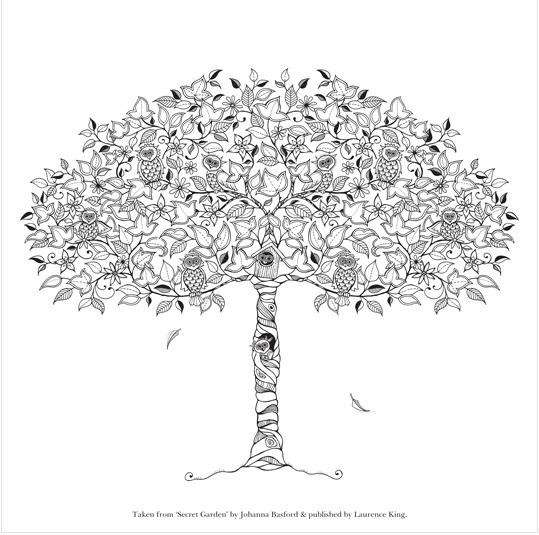First published in Daily Life, September 2015
The realisation that you might have squandered your childhood freedom is up there with adulthood’s most depressing cons. There’s a reason that an afternoon with a box of rainbow Crayolas as your only companion seems positively blissful when you’re attempting to squeeze yoga into your lunchbreak or breaking the speed limit on your way to that baby shower you’ve been dreading all week.
As Tim Kreider put in his now-legendary New York Times essay ‘The Busy Trap‘, we live in a world that values “histrionic exhaustion” and makes “crazy busy” a badge of pride. Who could blame us for sometimes believing that we had it right before we grew up?
Johanna Basford has an answer to this question. In March this year, the Scottish illustrator and “ink evangelist” stoked a worldwide obsession with adult colouring whenThe Secret Garden: An Inky Treasure Hunt and Colouring Book – which features impossibly intricate drawings of birds, foliage and mushrooms – replaced Harper Lee’s Go Set a Watchman as Amazon’s number one bestseller. It’s since sold 1.4 million copies, been translated into 14 different languages and spawned the wildly successful follow-up,The Enchanted Forest.
And in the last few months, titles such as Jim Gogarty’s The Mandala Colouring Book(“Inspire creativity and reduce stress!”), Emma Farrarons’ The Mindfulness Colouring Book, whose “dazzling patterns prompt you to meditate on your artworks”, and Mulga’s Magical Colouring Book (a riot of giant toucans and bearded hipsters) have seen adult colouring overcome its unfortunate erotic subtext to become a global craze.
For Minnesota blogger Jenny Finlayson, it’s a fuss-free creative outlet that’s also a mindful reprieve from our screen-happy existence. “Colouring can be a form of escapism where one can shed the stress and worries of the day and just focus on a simple creative task,” she told New York magazine in May 2015. In an April 2015 article in The Guardian, Matt Cain, an author and serial colourist, says that friends in less creative careers greet the colouring book he leaves on his coffee table with “squeals of delight”.
Adult colouring is also celebrated for its transformative potential – Emma Farraronsreceives emails from fans reporting that her book has helped ease grief, trauma and depression, while the neuropyschologist Dr Stan Rodski recently told ABC’s Radio National that adults who colour experience changes to their brainwaves that are nothing short of “amazing”. So whether you’re reeling from digital overload, stuck in a career rut or suffering an emotional ordeal, there’s evidence that reaching for your Jumbo Washables is the catchall cure.
But while adult colouring might rekindle blissful childhood memories, it’s also more insidious than it appears.
It’s no accident that the cultural shift that prizes productivity over achievement and sees the average Australian worker donate $9471 in unpaid overtime to employers each year correlates with the rise of the Mindfulness Industrial Complex, a multi-billion dollar phenomenon whose fruits include adult colouring circles, Vedic meditation classes (where students recline on Eames chairs), and a smartphone app called Headpace that bills itself as a “gym membership for your mind”.
It’s mildly ironic that adult colouring books, which promise to unleash the creativity you misplaced in childhood, are booming in a world that infantilises artists and whose material conditions make it increasingly impossible for them to make a living from their work. They’re a sign of a culture that repackages the creative freedom we had as children to compensate for the choices we lack in our adult lives.
In his bitingly funny video ‘Adult Colouring Books: Is this the apocalypse?‘, Russell Brand argues that this move towards an activity we loved in kindergarten isn’t an embrace of creativity or mindfulness but an attempt to distract us from the things that keep us trapped. “They’re part of an ideology that tells us that we can solve our problems by purchasing things, that the solution to the way you feel is buying an object and doing something passive and individualistic instead of [undertaking] a communal, collective activity,” he says.
Out of curiosity, I purchased The Mindfulness Colouring Book and attempted to shade a page of starbursts orange, green and blue. Five minutes in, I put my pencils down. Staying between the lines always made me anxious.
